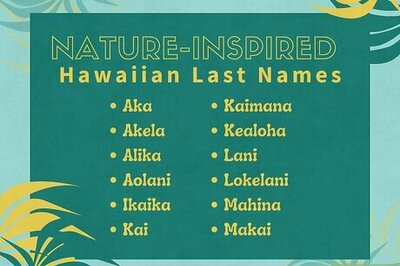
views
 A small persistent leaf tree, which normally reaches 5m in height was a curiosity in England when it first came from its home - either the western Mediterranean or the windy plains of Ireland.
A small persistent leaf tree, which normally reaches 5m in height was a curiosity in England when it first came from its home - either the western Mediterranean or the windy plains of Ireland.
The leaves, they noticed, were serrated and waxed. What could be its fruits like, they wondered, knowing it well that the shrub belonged to the strawberry family. Hanging bunches of small white flowers with pink brushstrokes on them raised the expectations sky-high. Finally, as the fruits came out after a long wait the English farmers were disappointed. The golden-yellow flesh has a disappointing texture and a bland flavour that gets nearly palatable only when the fruits reach the point of rot, over-ripe.
What to do now! Clear them off the land? Before the axe was brought in, they stopped to think. What could be the farmers of the Mediterranean doing with Arbutus, the tree!
The Arbutus grows in forests, in the bush, the grassy plains and in the rocky regions, wherever the land has an acidic tinge, from the Iberian Peninsula to Turkey.
Come to Portugal. You’d see people revering the tree. Ask them why! In the country, it is difficult to find a man who hasn’t tasted a curious drink that comes from the Algarve Mountains. To see it up close take a hike to the mountains, visit a family and spend an evening there.
You’d be treated with the interesting drink named Medronho.
A sip from it and you’d now desperately want to know from where the nectar comes. People will tell you a dozen ways of making the brandy, but they all go back to a single tree, the very tree the English farmers were desperately trying to get rid of from their land.
Come Autumn and the first rains, the branches of the Arbutus would be hanging down with the weight of red and orange fruits from which the famous brandy, Aguardente de Medronho is made in Portugal.
Harvesting season (October) is also the get-together season in the mountains.
Family, friends, neighbours, acquaintances all lend their hands to pick the berries from the orchard. It is a laborious, time-consuming process, but the convivial mood does the trick.
Berries are picked one by one and thrown into wicker baskets, carefully leaving the stocks and leaves behind. They know it well that the distillers are keen on only those bright red berries; anything raw roughens up the final drink. The most preferred are the trees that bask in the sun which bear the sweetest fruits.
By December they might have raided their lands enough times that no berries would be left in the trees. Now it is time to focus on the next phase of the process - fermentation.
The handpicked Medronho fruits are thrown into large pots or tanks and sprayed with water and fruit juice. When the mash comes to a full boil (bubbles), they put a lid on it to keep the harmful air from getting in. After a period of 60 days, the distillation process begins.
With the fire burning under, vapours from the fermented fruits rise and snake out from the pot along a tube, the other end of which, is plunged in a tank of cold water. The moment it lands on cold water the vapour liquefies. The first drops that come out from the tank, named header, is avoided for its bitter taste, but once the run gets smoother in a few minutes, they know their liquid gold. This is the thing they were waiting for, Aguardente, since the morning they went out with the farmers to pick the berries from the woods.
Remember a good brandy of Medronho is transparent and carries the smell and flavour of the fruit.
The farmers then send the brandy they collect to Algarve University where it is analysed for its quality. Only after it they can bottle, label and market it as their Aguardente de Medronho. Some of them age it in barrels for 6 to 8 years to increase its quality. Normally the brandy has 50% alcohol though it can go up to 56%.
What do the poor English farmers know!
(Manu Remakant is a freelance writer who also runs a video blog - A Cup of Kavitha - introducing world poetry to Malayalees. Views expressed here are personal)

















Comments
0 comment